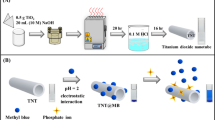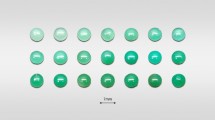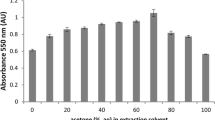Abstract
SINCE the first observations by Mikkelsen and Toth1 it has been well established that the reaction between magnesium ions and titan yellow (the sodium salt of methylbenzothiazole (1,3)-4,4′-diazoamino benzene (2,2′)-disulphonic acid) can be extremely variable due to differences in the composition of the dye. In an attempt to overcome difficulties in the determination of magnesium in plant samples due to such variations Bradfield2 recommended a technique for assessing the sensitivity of the dye and later reported the presence of a component which was intensely fluorescent3.
This is a preview of subscription content, access via your institution
Access options
Subscribe to this journal
Receive 51 print issues and online access
$199.00 per year
only $3.90 per issue
Buy this article
- Purchase on Springer Link
- Instant access to full article PDF
Prices may be subject to local taxes which are calculated during checkout
Similar content being viewed by others
References
Mikkelsen, D. S., and Toth, S. J., J. Amer. Soc. Agron., 39, 165 (1947).
Bradfield, E. G., Analyst, 85, 666 (1960).
Bradfield, E. G., Anal. Chim. Acta, 27, 262 (1962).
Schachtschabel, P., Z. Pflanzenernähr. Düng. Bodenk., 67, 9 (1954).
Author information
Authors and Affiliations
Rights and permissions
About this article
Cite this article
HALL, R., FLYNN, L. Heterogeneity of Titan Yellow demonstrated by Thin-layer Chromatography. Nature 208, 1202–1203 (1965). https://doi.org/10.1038/2081202a0
Issue Date:
DOI: https://doi.org/10.1038/2081202a0
Comments
By submitting a comment you agree to abide by our Terms and Community Guidelines. If you find something abusive or that does not comply with our terms or guidelines please flag it as inappropriate.



